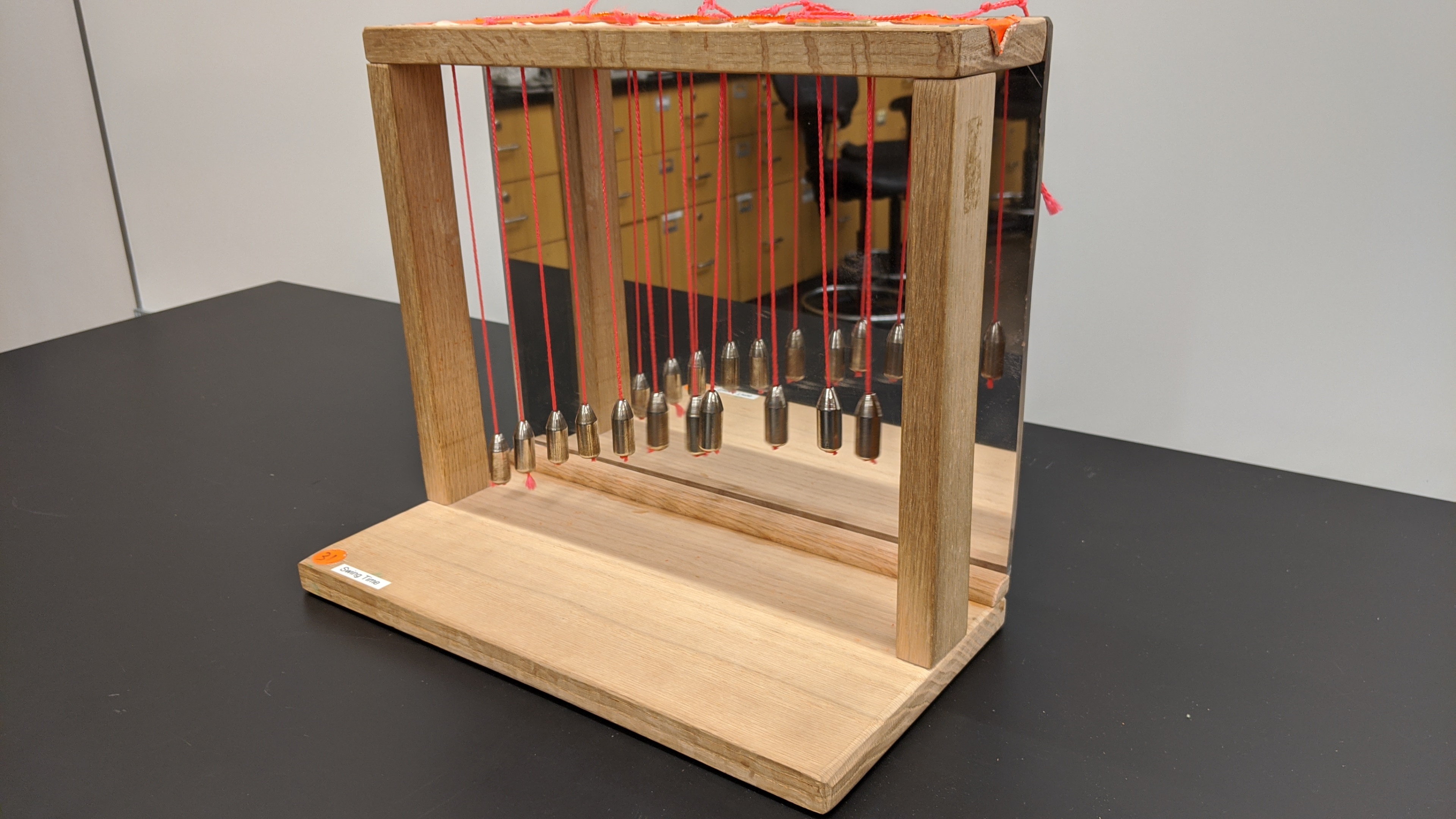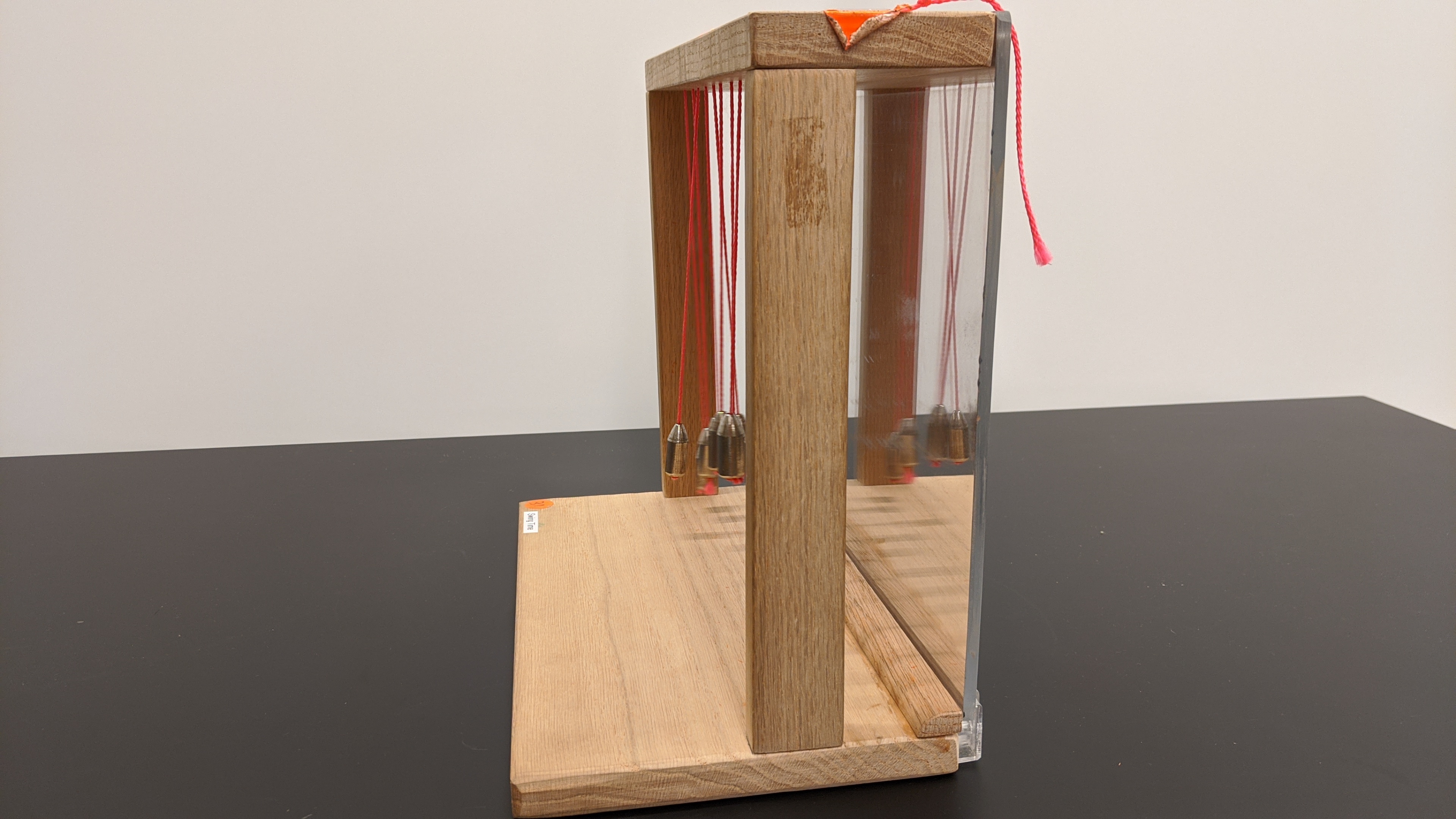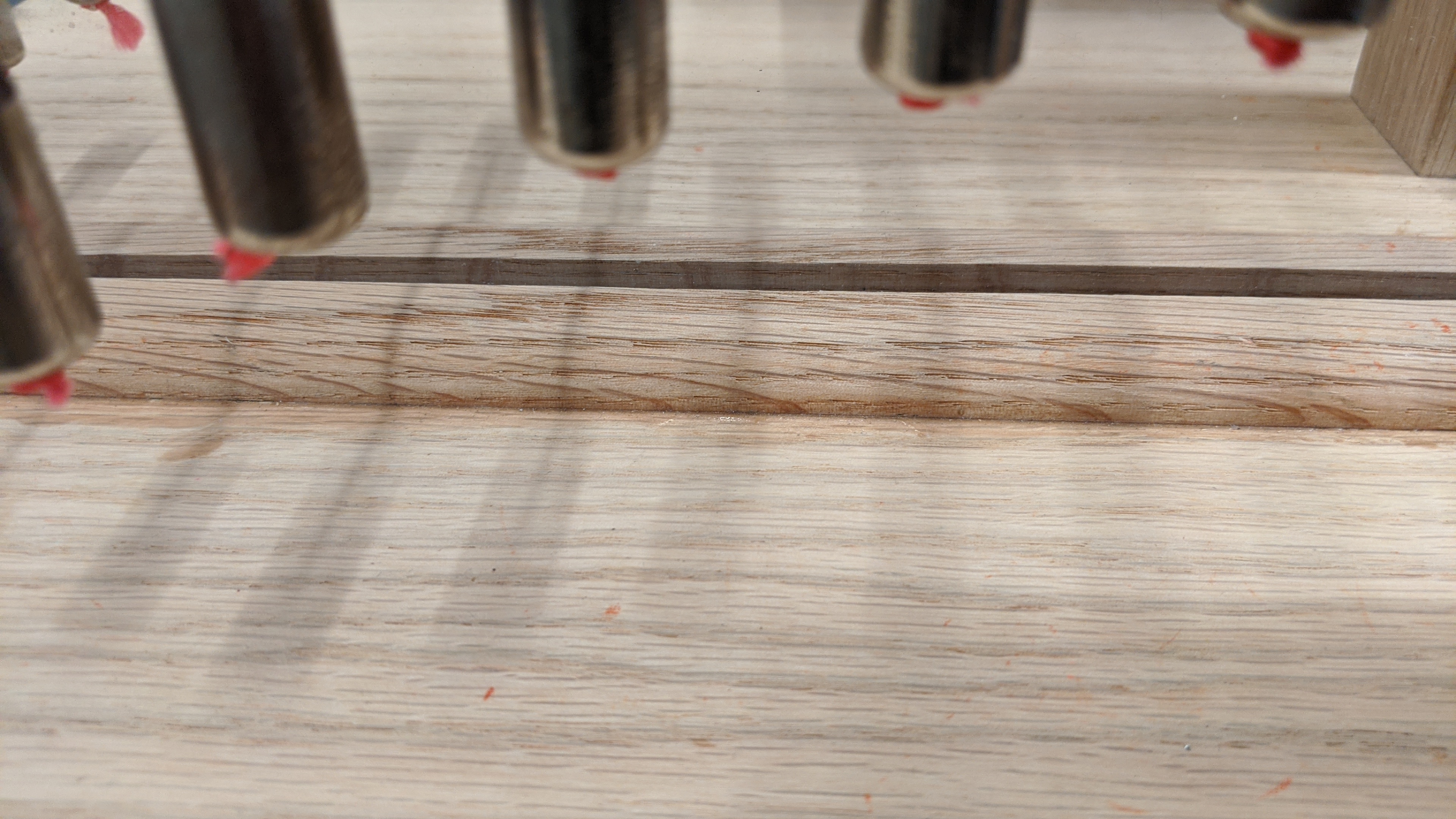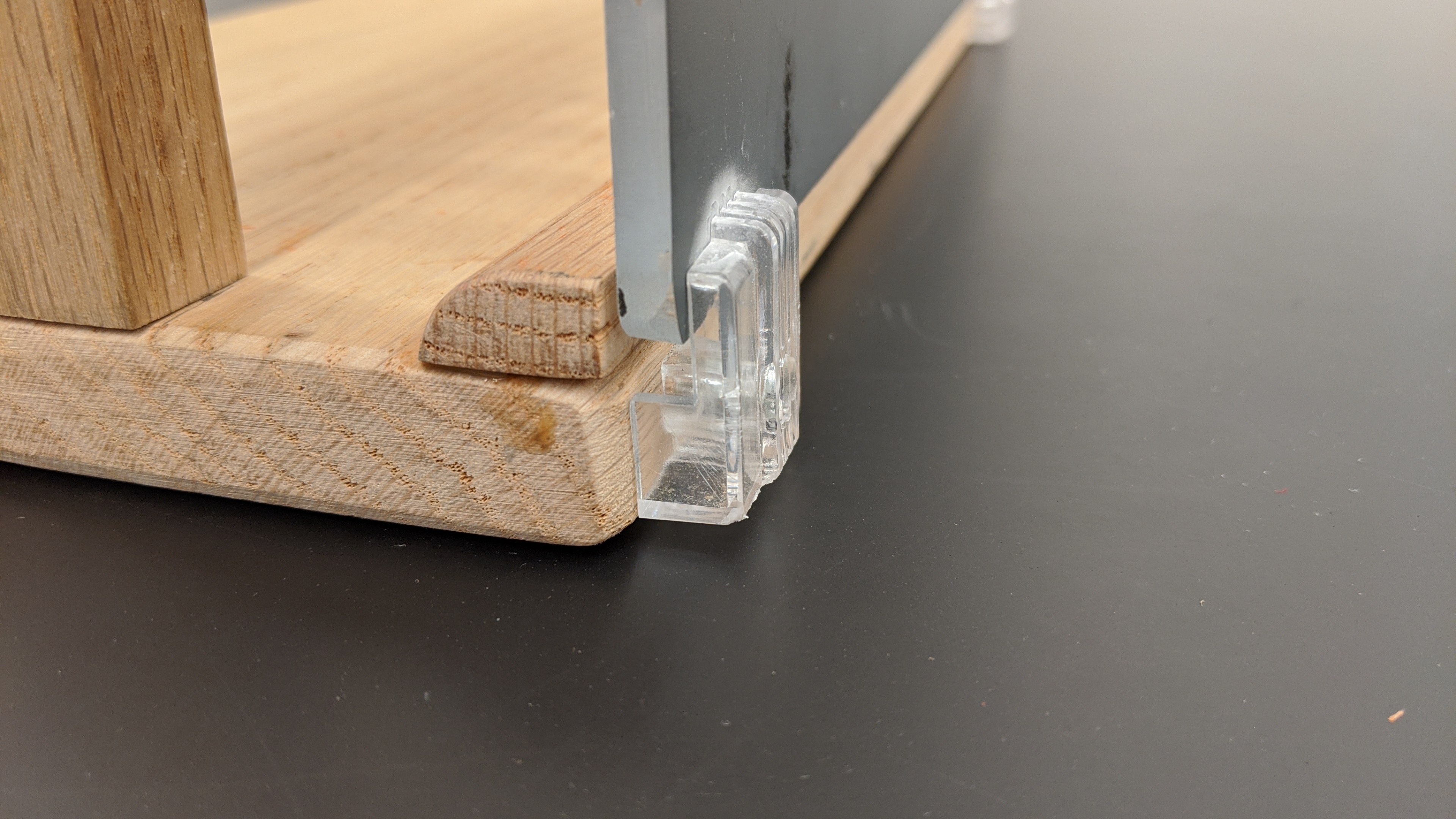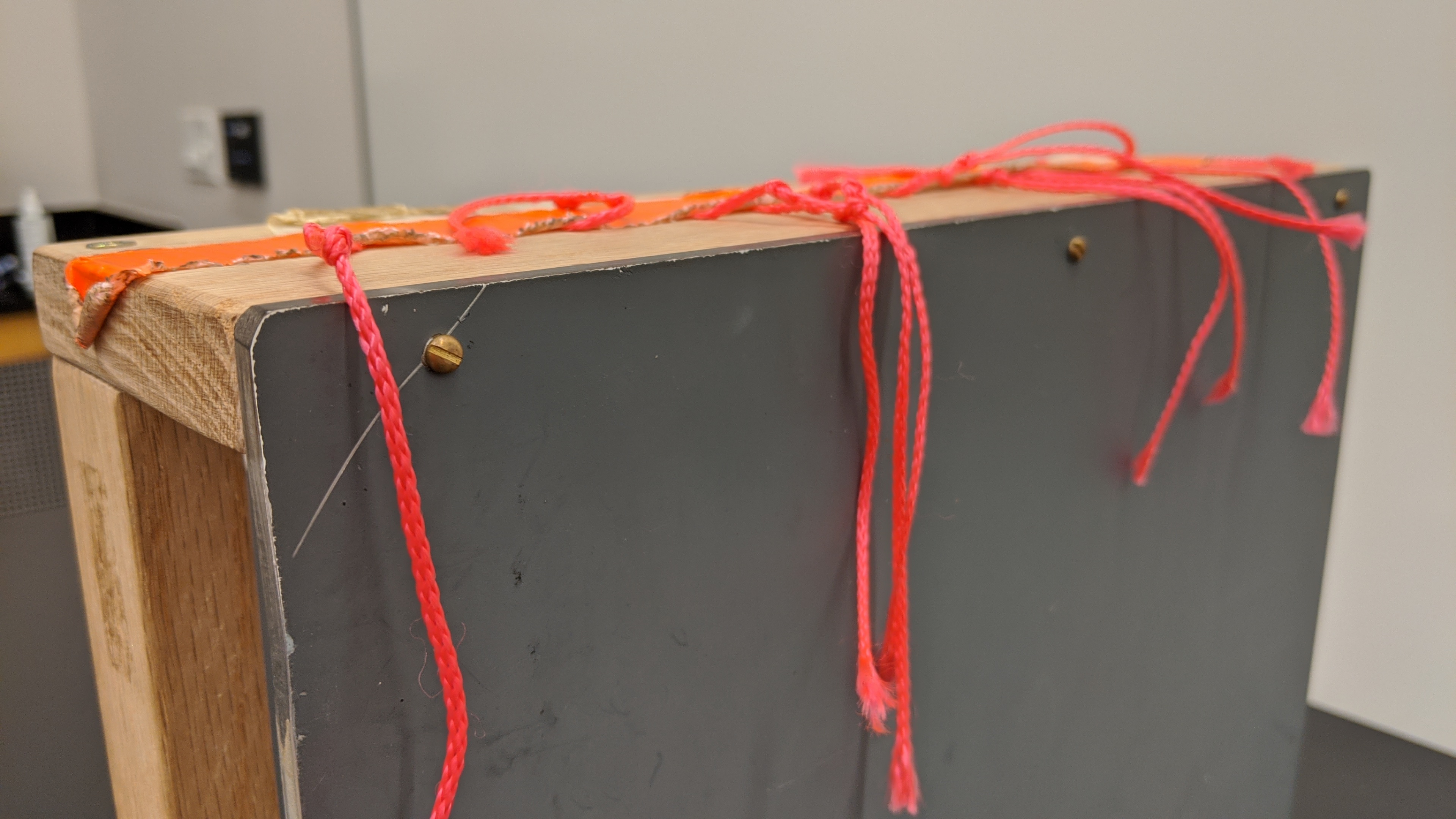Swing Time
Tip the frame back and then release it, to release all the weights at the same time. They start in unison, but gradually drift out of time with each other. This happens because the lengths of the strings are different, so they have different periods of oscillation.
Materials
- strong but lightweight string
- weights (do not have to be identical)
- mirror (11x14in) (optional)
- plastic brackets for mirror (optional)
- wooden base, about 7x14x3/4 in
- wooden top, about 3.5x14x3/4 in
- 2 wooden posts, cut to fit vertical distance, about 1.5x10.4x3/4 in
- wooden molding, 14 in
Construction Instructions
The pictures above show how we constructed our frame. Build a frame however you like, just take the given part measurements as a possible choice. The mirror enhances the visual appeal, but is not strictly necessary. It's also nice if the support posts don't obscure the side view of the weights.
The absolutely vital part of the exhibit is the length of the strings. To get the wave effect, you want the periods of the weights to increase by a fixed amount from one to the next. The period is proportional to the square root of the length, so you want to increase the square root of the length by a fixed amount each step.
For example: Suppose you want the first string to be 9 cm long, and the last string to be 16 cm long. Take the square root, so the first is 3 and the last is 4. Now choose evenly spaced values: 3, 3.1, 3.2, 3.3, 3.4, 3.5, 3.6, 3.7, 3.8, 3.9, 4. Then, square those numbers: 9 cm, 9.61 cm, 10.24 cm, 10.89 cm, 11.56 cm, 12.25 cm, 12.96 cm, 13.69 cm, 14.44 cm, 15.21 cm, 16 cm. Those are the string lengths you want (You can use the same method with different first/last string lengths).
Note: Don't cut your string to those lengths. Cut them a few cm too long, tie the weight to the end, thread the string through a hole that goes all the way through the top of the frame, then pull the string up until the length from the center of the weight to the frame is the desired length, and tape the string in place. You can always untape a string and adjust it later.
Also note: The mass of the weights has no effect on the period (this is why a pendulum is such a robust timekeeping device), just as long as the hanging mass is significantly larger than the mass of the string.

